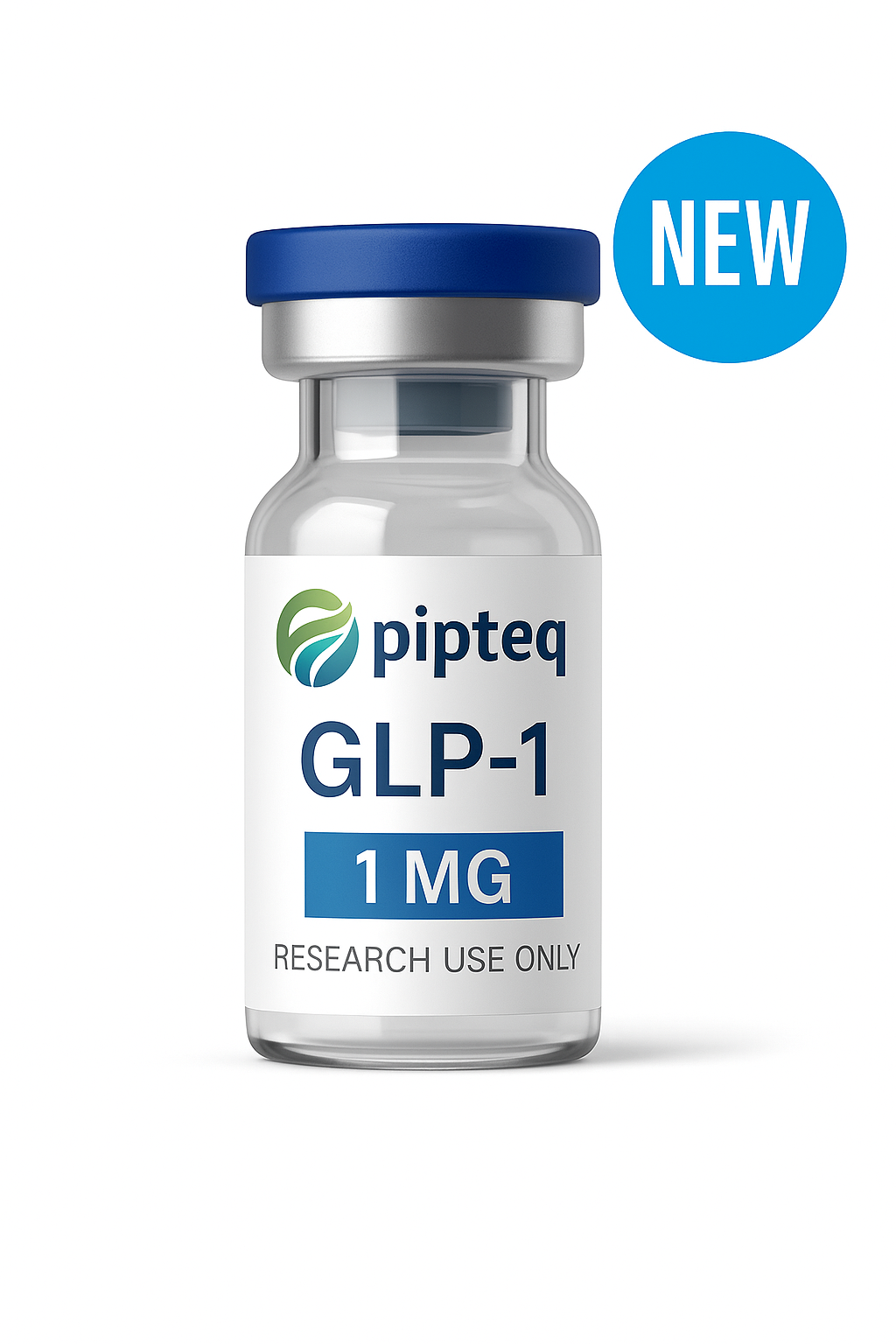🌿 GLP-1: The Metabolic Peptide Revolutionizing Weight Loss and Diabetes Care
In recent years, GLP-1 receptor agonists have become the frontline therapy for obesity, type 2 diabetes, and metabolic syndrome. Originally discovered as a gut hormone, GLP-1 (Glucagon-Like Peptide-1) has now become a superstar in both clinical medicine and wellness circles.
With powerful effects on appetite suppression, blood sugar control, and fat metabolism, GLP-1-based therapies like semaglutide (Ozempic) and liraglutide (Saxenda, Victoza) are transforming the landscape of medical weight loss.
🧬 What Is GLP-1?
GLP-1 (Glucagon-Like Peptide-1) is a naturally occurring incretin hormone released from the gut after eating. Its primary job is to:
- Enhance insulin secretion
- Suppress glucagon (blood sugar-raising hormone)
- Slow gastric emptying
- Reduce appetite by acting on the brain
This makes GLP-1 a critical regulator of blood sugar and body weight.
🔬 GLP-1 Receptor Agonists: How They Work
GLP-1 has a very short half-life, so scientists created GLP-1 receptor agonists — modified versions of GLP-1 that last longer and bind more effectively to GLP-1 receptors.
These synthetic versions mimic natural GLP-1 and are used to:
- Lower blood sugar in type 2 diabetes
- Induce weight loss by reducing appetite and calorie intake
- Improve cardiovascular health
Common GLP-1 analogs include:
- Semaglutide (Ozempic®, Wegovy®)
- Liraglutide (Victoza®, Saxenda®)
- Dulaglutide (Trulicity®)
- Exenatide (Byetta®, Bydureon®)
✅ Top Benefits of GLP-1 (Clinically Proven)
🔥 Powerful Weight Loss Support
GLP-1 analogs consistently lead to 10–20% body weight reduction in clinical trials, often outperforming traditional diet and exercise alone.
🍽 Appetite Suppression
Acts directly on the hypothalamus in the brain to reduce hunger and increase satiety.
🩺 Blood Sugar Regulation
Lowers post-meal glucose spikes, increases insulin sensitivity, and reduces A1C levels in diabetics.
❤️ Cardiovascular Protection
Shown to reduce risks of heart attack, stroke, and kidney disease in at-risk populations.
🧠 Cognitive & Mood Effects (Emerging Research)
Early studies suggest benefits for Alzheimer’s disease, brain inflammation, and emotional regulation.
⚠️ Potential Side Effects
While GLP-1 therapies are generally well tolerated, some users may experience:
- Nausea or stomach upset (especially early on)
- Constipation or mild GI discomfort
- Fatigue or headache
- Rarely: pancreatitis or gallbladder issues (with certain analogs)
Most side effects diminish over time, especially with gradual dose titration.
📊 GLP-1 Receptor Agonists Comparison Chart
| Medication | Brand Names | Half-Life | Common Use |
|---|---|---|---|
| Semaglutide | Ozempic, Wegovy | ~7 days | Diabetes, weight loss |
| Liraglutide | Victoza, Saxenda | ~13 hours | Weight loss, diabetes |
| Dulaglutide | Trulicity | ~5 days | Weekly injection |
| Exenatide | Byetta, Bydureon | 2.4–7 days | Older version |
📚 Trusted References & Scientific Sources
- 🔗 PubMed – GLP-1 and Appetite Control
- 🔗 NEJM – Semaglutide in Obesity Study
- 🔗 FDA – Ozempic Approval Info
- 🔗 ScienceDirect – GLP-1 and Brain Health
- 🔗 Mayo Clinic – GLP-1 Explained
🛒 Where to Find GLP-1 Research Products
⚠️ GLP-1 medications like semaglutide and liraglutide are prescription-only drugs and should only be used under licensed medical supervision.
For research-only peptides or GLP-1 analogs for laboratory investigation:
- 🔗 Peptide Sciences – Semaglutide (Research Use)
- 🔗 SwissChems – GLP-1 Agonists
- 🔗 Pipteq™ – UK-based research peptide platform (Coming Soon)
🚀 Conclusion: Is GLP-1 a Game-Changer for Metabolic Health?
GLP-1-based therapies have proven to be among the most effective tools in modern medicine for supporting weight loss, improving blood sugar, and protecting against heart disease. With broad therapeutic potential and strong scientific backing, GLP-1 is revolutionizing how we approach obesity and metabolic disorders.
Whether you’re a clinician, biohacker, or wellness professional, understanding the role of GLP-1 peptides will be essential in the next era of personalized medicine.

